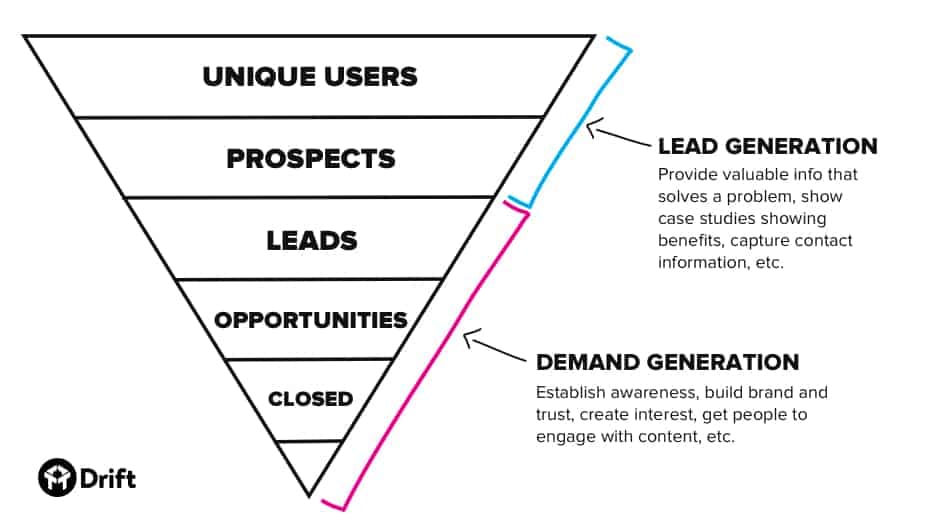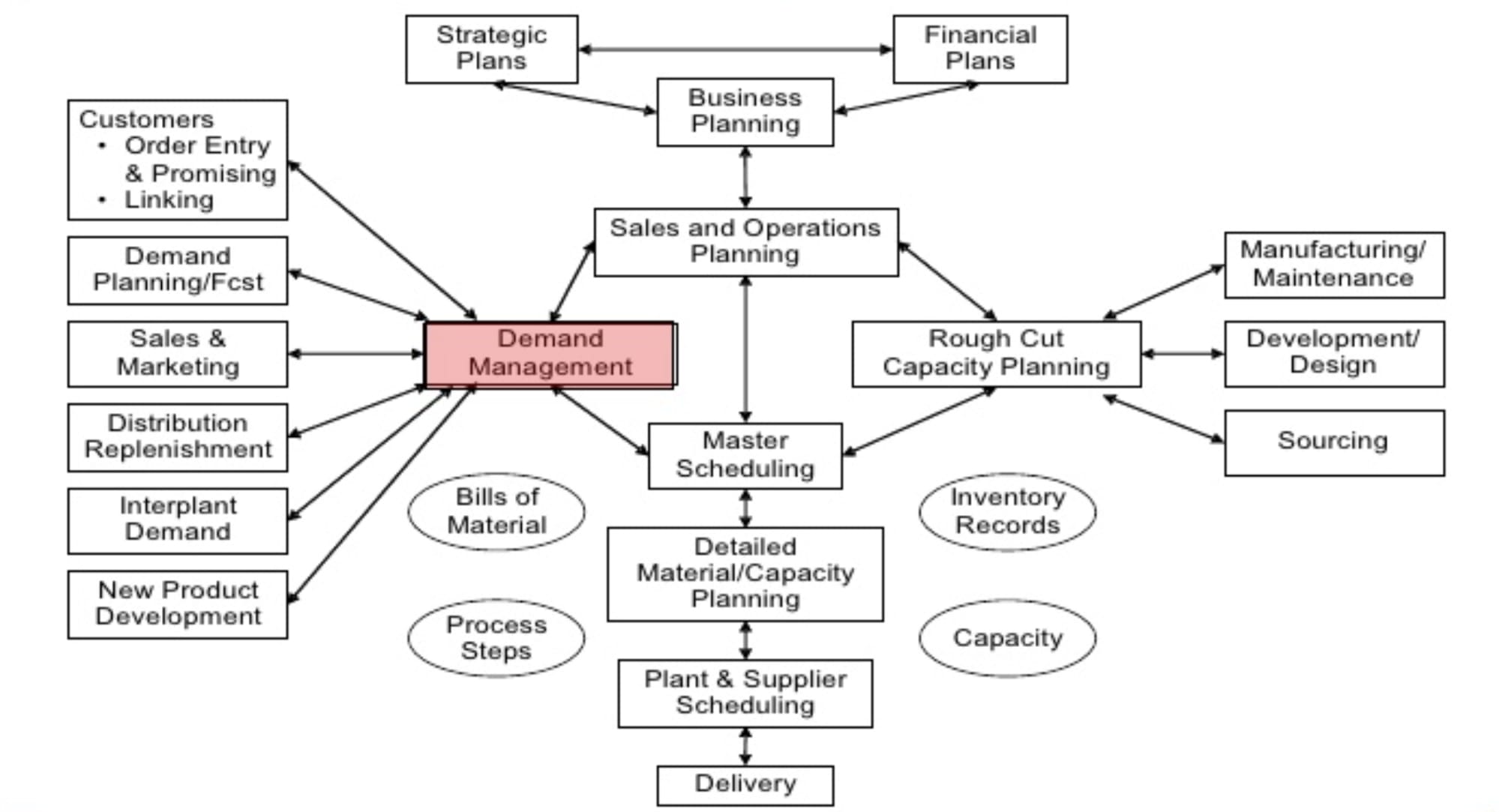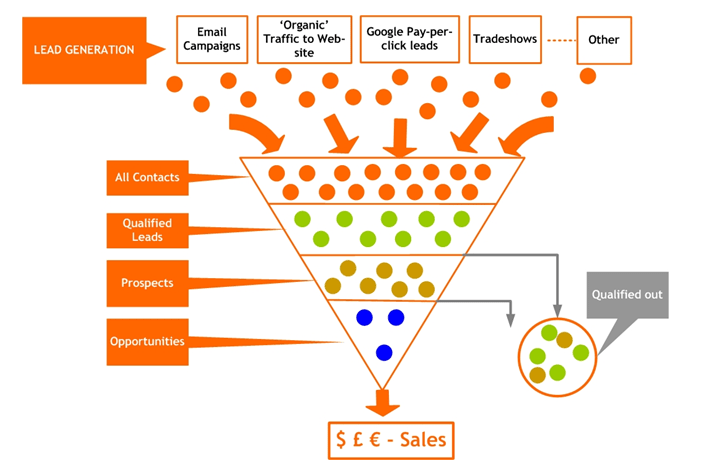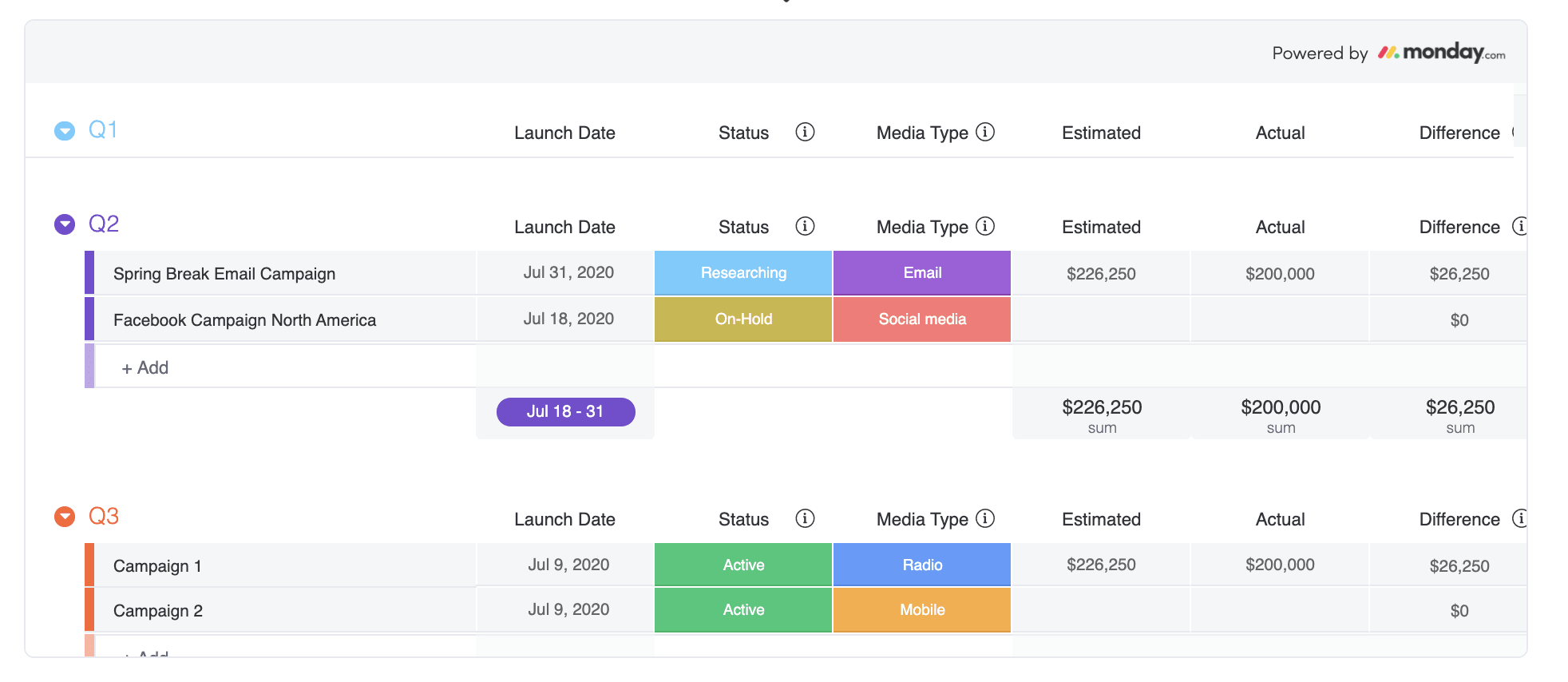Your customers have pain points and they’re itching for solutions. What if your company could not only solve their issues but predictably identify any solution barriers and smash right through them?
That’s demand management in a nutshell.
In this article, we’ll define demand management, go over why it’s so important, talk about what to look for in a demand management system and provide some guidance on getting started:
What is demand management?
Demand management is a series of focused efforts designed to carefully estimate, plan, and manage consumer demand for your company’s products and services.
Demand management is ultimately about synchronizing supply and demand, remaining flexible, and reducing variability as much as possible.
To put it plainly, demand management makes it easier to provide your customers what they need, when they need it, and do so in a way that is as efficient and profitable as possible for your company.
The information you gather from the demand management process shapes your operating process, which affects every decision down your supply chain and ideally helps your company operate at a higher capacity than without it.
Often demand management gets confused with demand generation.
They’re both pivotal processes but are ultimately unique and aren’t to be used as interchangeable terms.
Demand generation is the specific way an organization goes about generating the demand for its products and services. It’s any activity that directly or indirectly drives awareness or interest in your company’s products or services.
Typically, the demand generation process is a gradual process that encompasses the entire span of marketing activities. Many organizations think of demand generation in terms of a funnel that provides proper planning and response to consumer needs as they travel through the funnel.

Ultimately, demand generation is a long-term relationship between your brand’s sales and marketing team and prospective customers.
It’s about creating a predictable pipeline that’ll help you grow your business and will unify supply and demand, so you’re always operating as efficiently as possible.
Why are demand management and demand generation so important?
Demand management and demand generation aren’t just about creating a demand for sales. It’s also not about tricking people into buying things they don’t want or need.
Demand management is about providing the right information at the right time to the right people.
Many people call it demand forecasting and the process strives to consistently keep inventory perfectly level at all times to satisfy both seasonal downswings and peak demand.
Demand management is about sharing the solutions that fit perfectly with your ideal customer’s needs.
Without demand management and generation, it’s likely your company lacks the carefully defined processes and capabilities necessary to provide a steady flow of demand.
Demand management provides an endless loop of forecasting, planning, and managing that gets better over time. In turn, this increases the predictability of outcomes and enables your organization to quickly adjust to change.
And as you well know, change, disruption, and chaos can present itself at a moment’s notice.
Demand management protects your portfolio. It attempts to predict swings in demand but constantly keeping a pulse on what matters most to your company, customers, and vendors.Demand volatility that’s triggered by market conditions or macro events like the coronavirus pandemic are difficult to predict or navigate.
The market responds in knee-jerk reactions, and many companies resort to “firefighting” or reacting to the situation instead of planning proper responses for such events.
Being ready for literally anything requires in-depth forecasting, careful planning, and a demand management plan that eliminates costly reactionary activities. Ultimately, demand management and generation keep you on the offense.
Challenges with demand management
If demand management sounds like the best thing since sliced bread, you’re probably also wondering, “what’s the catch?”
Fair enough. Demand management on paper sounds like a superpower, but that doesn’t mean it comes easy or isn’t without challenges. Some common roadblocks include:
- Misalignment of goals and expectations between demand generation departments like marketing and sales and supply chain departments like logistics, sourcing, and operations.
- Gathering accurate information that’s trustworthy, up-to-date, and relevant is often challenging. Many organizations rely solely on historical data to predict demand, which is problematic since market conditions are continually changing.
- Creating and maintaining agile, scalable processes that adapt to change won’t always have the buy-in or resources needed to be as successful as possible. Any misalignment of priorities can make it difficult to have steady demand instead of problematic swings.
- Planning for unpredictable or highly improbable events is far from straightforward. Supply chains get tested, and capacity can dry up overnight when events like the pandemic occur.
- Properly demonstrating changes in demand in a quantifiable and easily visualized way is challenging. Often it requires the right software with a robust suite of integrations (hint: monday.com can help).
Often the biggest hurdle is the misalignment between supply and demand.
Many business thought leaders have called the divide between sales and operations the “great divide” since they don’t communicate as much as they should and often blame each other for shortcomings.

With demand management touching nearly every department in the company, there’s bound to be some misalignment.
The supply side of the house forecasts capacity, and simultaneously the demand side of the house forecasts demand, and as you can probably surmise, they rarely align perfectly.
Why you need a demand management system
Keeping your company’s portfolio in prime shape by predicting future demand requires a lot of moving pieces. Sure, you can manage everything in separate platforms, but wouldn’t it be better if all those systems talked to each other?
That’s what a demand management system offers.
The right service provider helps with the planning process, can track each sales order, and provide the insights necessary to stay on top of demand forecasting.
Without a demand management system:
- Critical tasks fall through the cracks because your team is manually moving data from system to system and are bound to make mistakes.
- There’s a breakdown of communication internally and externally because each of your systems have different nuances and channels of communication.
- You’re missing out on the benefits of transparency and oversight because tracking each sales order and all your other key performance indicators (KPIs) is spread across multiple platforms.
- There’s little to no reliable predictability, forecasting, or trend detection because all of your systems are working independently, which means your teams likely are as well.
- There’s a lack of automation, which keeps your team bogged down with unnecessary admin tasks or repetitive work that could be best handled by a higher-level system.
A demand management system enhances forecast accuracy and helps prevent misalignment between your supply forecast and demand forecast.
Ultimately, a demand management system is the tip of the spear.
It pushes forward and keeps your team on the offense collecting ideas and keeping strategy at the forefront of all decisions. It empowers frontline staff with the proper tools that support the day-to-day operations, detects misalignment or bottlenecks in processes, and helps maintain visibility across teams.
Features to look for in a demand management tool
Fusing supply and demand while also making progress toward your company initiatives requires flexibility and scalability. When choosing a demand management system, it’s important to keep demand generation top of mind.

Oversight means nothing without the ability to integrate with your frontline tools that are actually generating demand and keeping your supply chain running smoothly.
Ideally, you’d have one that helps monitor demand key performance indicators (KPIs) to ensure your demand planning strategy is working.
Some common demand generation KPIs are:
- Traffic stats: new and returning visitors.
- Engagement stats: content engagement and session duration.
- Secondary actions: consumer insights via surveys and newsletter sign-ups.
- Primary actions: contend downloads, trial conversions, and info requests.
- Monetization: marketing qualified leads (MQL), sales qualified leads (SQL), meeting requests, and opportunities.
Beyond tracking KPIs, you’ll want a demand management system that integrates with your favorite tools. At a minimum, you should see integrations with your CRM system, marketing tools, and project management systems.
Beyond integrations, another must-have feature is the ability to visualize your data in unique and engaging ways so that your staff and stakeholders can easily absorb the insights needed to make strong operational decisions.
How monday.com can help streamline your demand management process
We’d be remiss if we didn’t mention what monday.com brings to the demand generation and demand planning process.
monday.com is a full-fledged Work OS where anyone has the flexibility to create the tools required to run every aspect of their business. Yes, including demand management and demand generation tracking.
Think of monday.com as a series of building blocks full of possibility and customization so you can tailor-make the boards, dashboards, and processes your organization thrives upon.
Let’s explore some of the features together:
- 30+ unique column types that are completely customizable and ensure your team has complete freedom to do work on their terms.
- 8+ data visualizations, including the Table chart, which often provides the best view for tracking every sales order, inventory item, and client profile.
- Unlimited automation recipes so you can eliminate time-consuming, repetitive tasks, and minimize costly human errors.
- Intuitive communication tools that supply your team, vendors, and stakeholders with real-time updates.
- 40+ integrations, including Zapier, which connects you with thousands more web apps.
Speaking of integrations, monday.com integrates with demand generation tools like Mailchimp, Facebook Ads, Hubspot, Facebook Ads, and more. Lots more.

Finally, monday.com makes it easier than ever to dive right into demand generation campaigns with pre-built templates such as:
- Marketing Calendar Template that helps plan, organize, and visualize all your marketing activities.
- Digital Marketing Plan Template to see a granular view of all your action items based on priority, progress, and platform.
- Email Marketing Template to keep tabs on all outbound marketing emails from sales emails and press releases to newsletters and webinar sign-ups.
- Marketing Budget Template to tie it all together and ensure your planning efforts align with reality.
As you can see, the path to creating a foolproof demand generation strategy is easier than you might think.
Let’s get organized
A business can commit to selling more than it can make, or produce more than it can sell. Both scenarios are problematic and ultimately lead to increased costs, decreased service, or both.
It’s normal to expect said mismatches, and the first step to ridding yourself of them is by identifying the mismatches.
Once identified, it’s easier to develop an appropriate demand planning strategy to bring supply and demand back into balance.
Forecasting future demand provides a solution to finding that balance and keeps your company’s strategy aligned through the entire business.
Why not grab one of the templates above and see for yourself? It may be the best thing you do all day.

